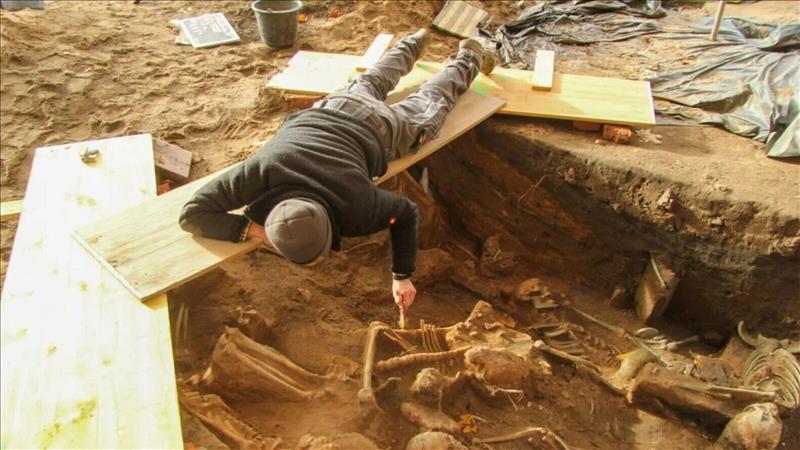
403
Sorry!!
Error! We're sorry, but the page you were
looking for doesn't exist.
Archaeologists Discover Over 1,500 Skeletons At Construction Site In Germany's Nuremberg
(MENAFN- Live Mint) "Amid excavations preceding the construction of a retirement home at Germany's Nuremberg, archaeologists have made a significant discovery and found over 1,500 skeletons of plague victims in mass graves, reported CNN is likely to be the largest mass burial of plague victims ever found in Europe Langbein, from Nuremberg's Department for Heritage Conservation, said, as quoted by CNN, that around plague pits were identified and each contained several hundred bodies precise dating is pending, initial details claim that the eight plague pits were established around the first half of the 17th century READ: After Gyanvapi, ASI to conduct survey at Bhojshala temple in Madhya PradeshTo a surprise, even a few bones show a green tint, maybe because the site was used to dispose of waste from a nearby copper mill.“Those people were not interred in a regular cemetery although we have designated plague cemeteries in Nuremberg,” CNN quoted Langbein as saying.“This means a large number of dead people who needed to be buried in a short time frame without regard to Christian burial practices,” she said to Langbein, Nuremberg suffered plague outbreaks roughly every 10 years from the 14th century onward. Due to this, it is a challenge for them to date the remains used radiocarbon dating to date one mass grave, and found out that the older group of remains probably dates from the 1632-1633 epidemic, said the report. They even presume almost 2,000 people were buried near St. Sebastian Spital – which is the site of the current excavation Terra Veritas is carrying out the excavation and the firm's representative Julian Decker said he was surprised by the discovery.“There was no indication to assume that there were burials on this field,” CNN quoted him as saying, adding, \"I personally expect the number to be at 2,000 or even above, making it the biggest mass grave in Europe.”
The 1632-1633 epidemic was worse before people came before because of the impact of the Thirty Years War – a series of conflicts fought by various European nations from 1618 to 1648, Langbein told CNN.“Nuremberg was surrounded by different troops and the population was living in quite dire circumstances,” she said the meantime, she said that there will also be collaborations with institutions interested in certain aspects of the findings.“We're also planning an exhibition, but this will take some time, so fall 2025 would be the earliest we could be ready,” said Langbein.
The 1632-1633 epidemic was worse before people came before because of the impact of the Thirty Years War – a series of conflicts fought by various European nations from 1618 to 1648, Langbein told CNN.“Nuremberg was surrounded by different troops and the population was living in quite dire circumstances,” she said the meantime, she said that there will also be collaborations with institutions interested in certain aspects of the findings.“We're also planning an exhibition, but this will take some time, so fall 2025 would be the earliest we could be ready,” said Langbein.
Legal Disclaimer:
MENAFN provides the information “as is” without warranty of any kind. We do not accept any responsibility or liability for the accuracy, content, images, videos, licenses, completeness, legality, or reliability of the information contained in this article. If you have any complaints or copyright issues related to this article, kindly contact the provider above.






















Comments
No comment